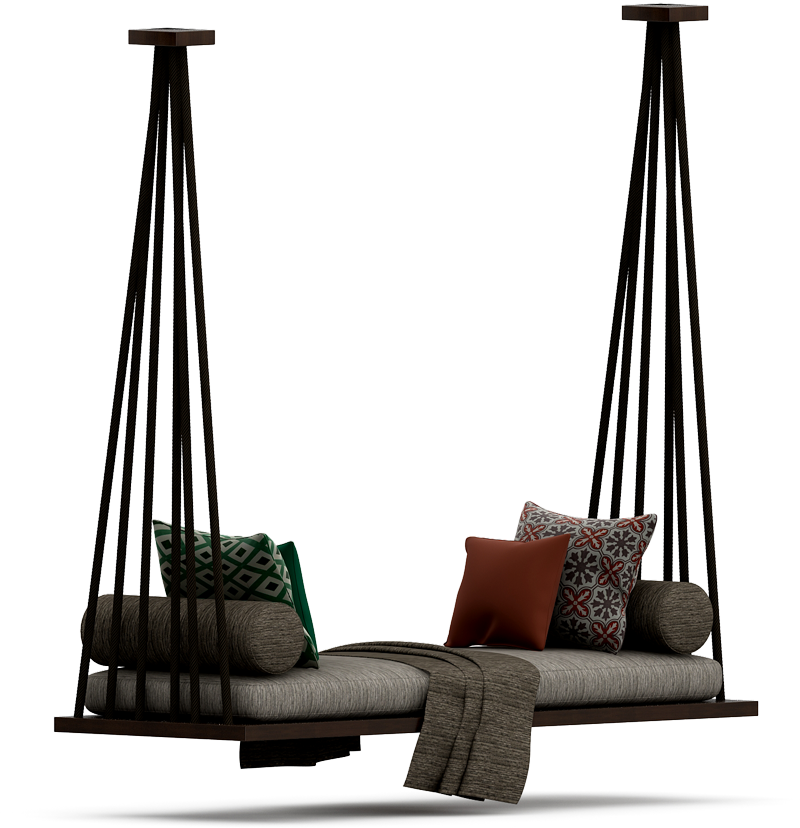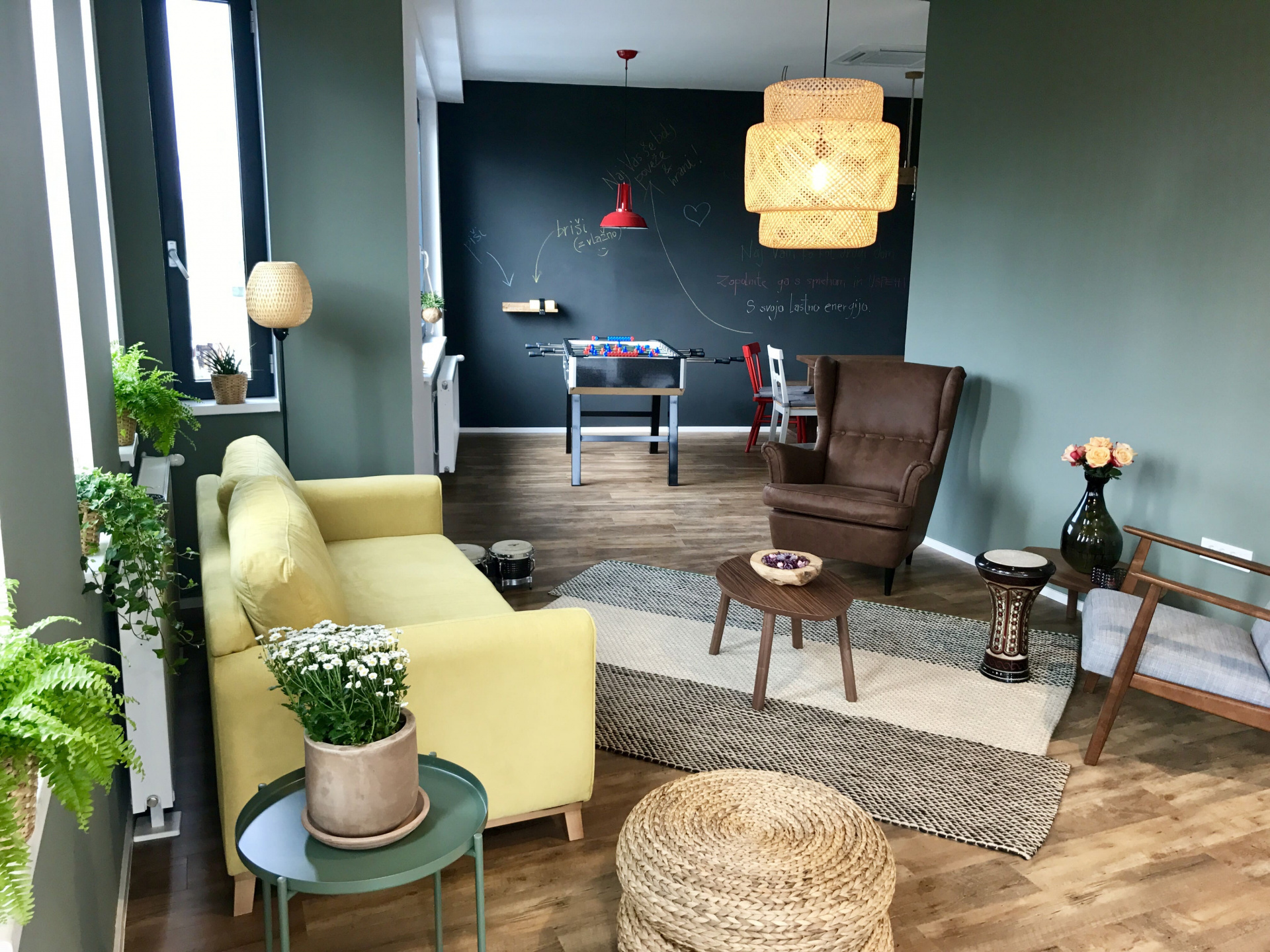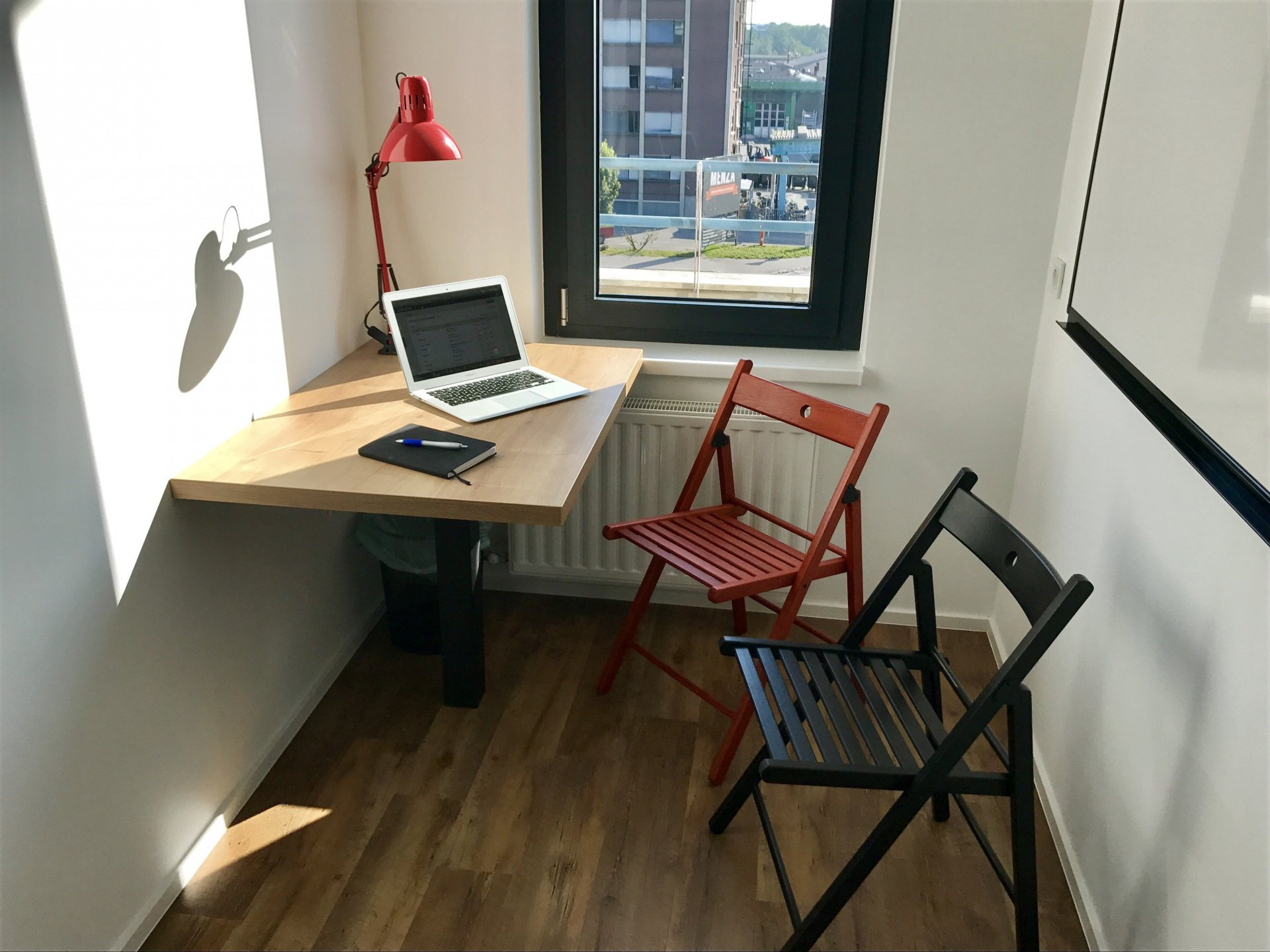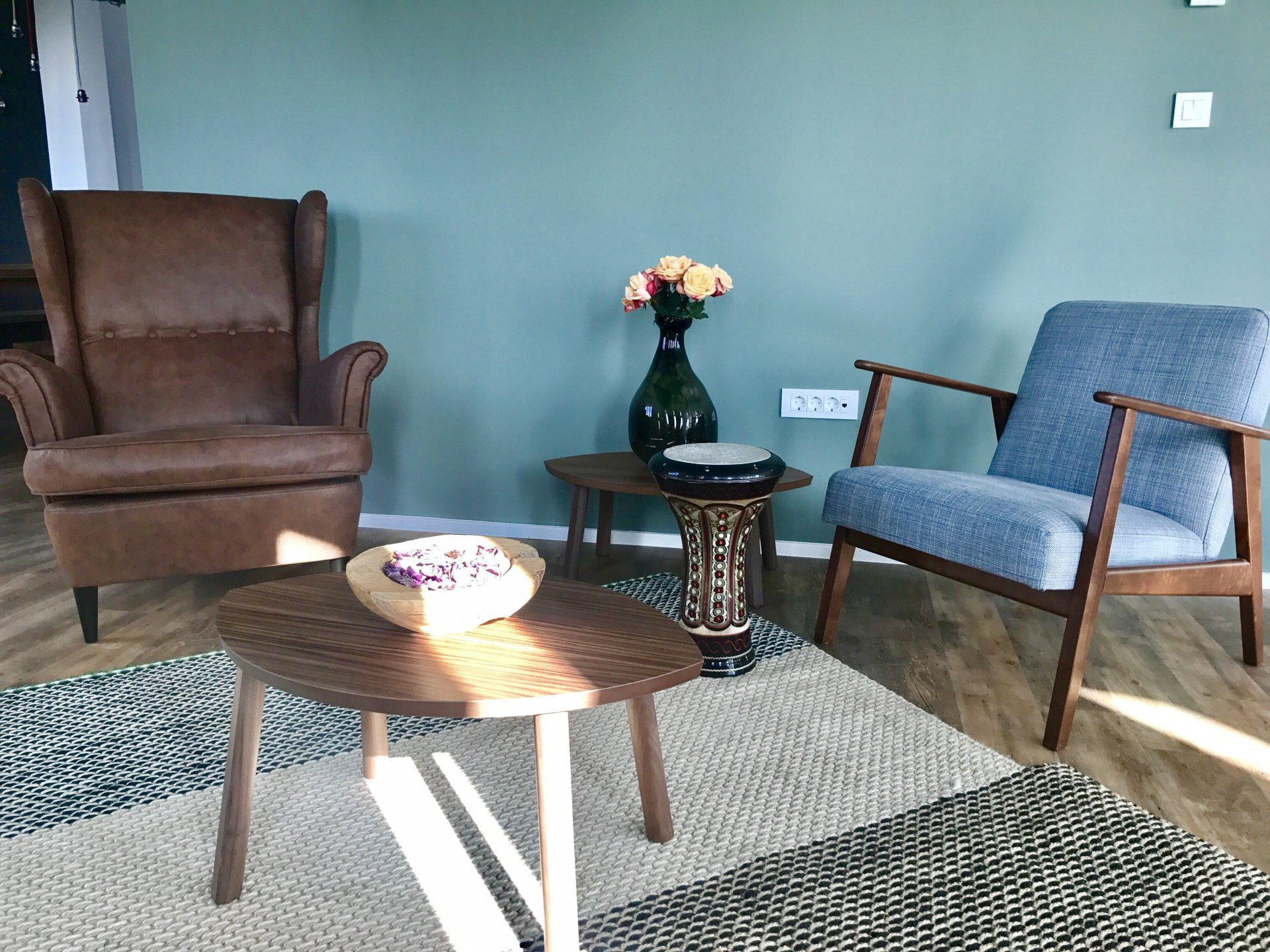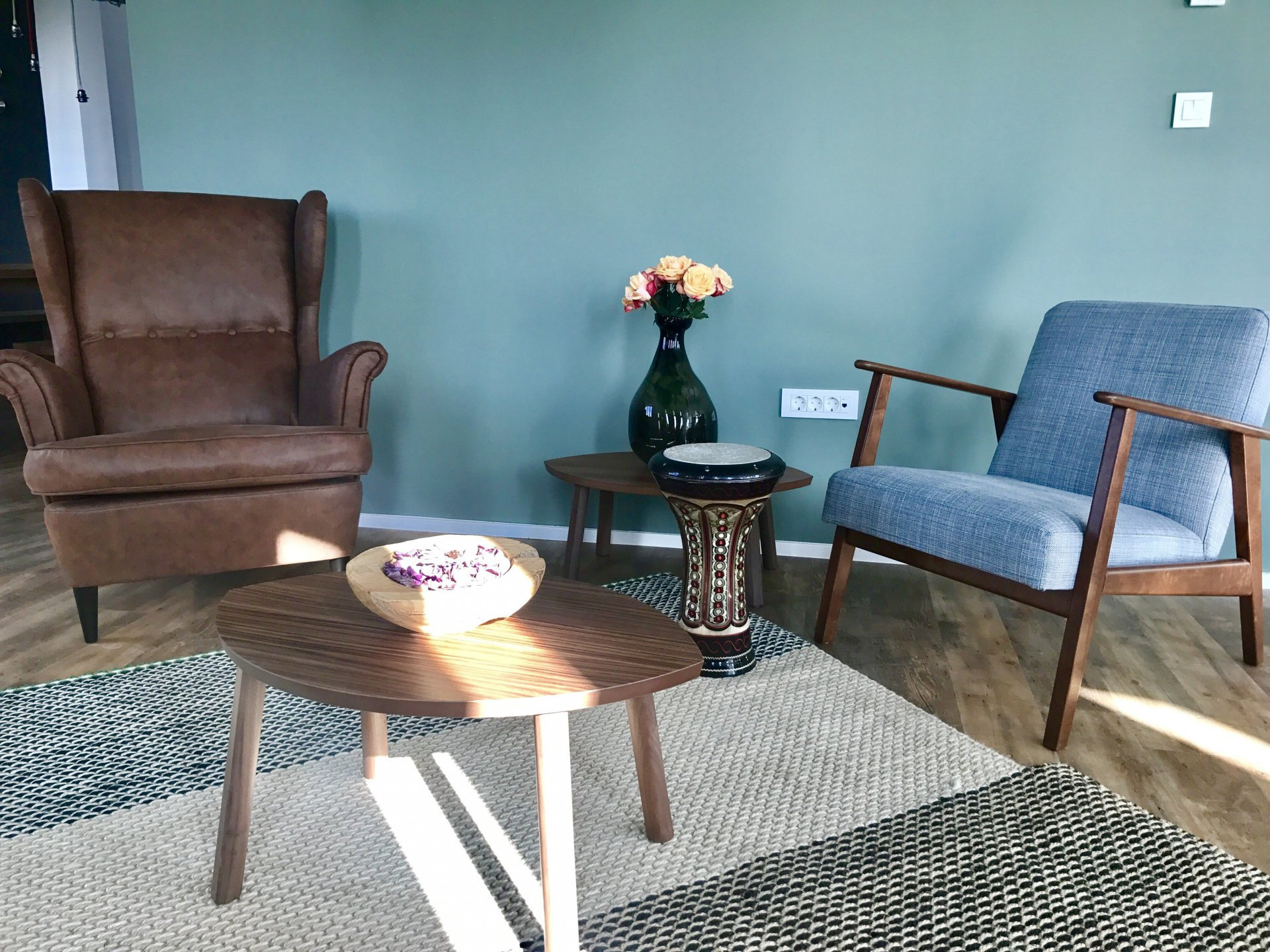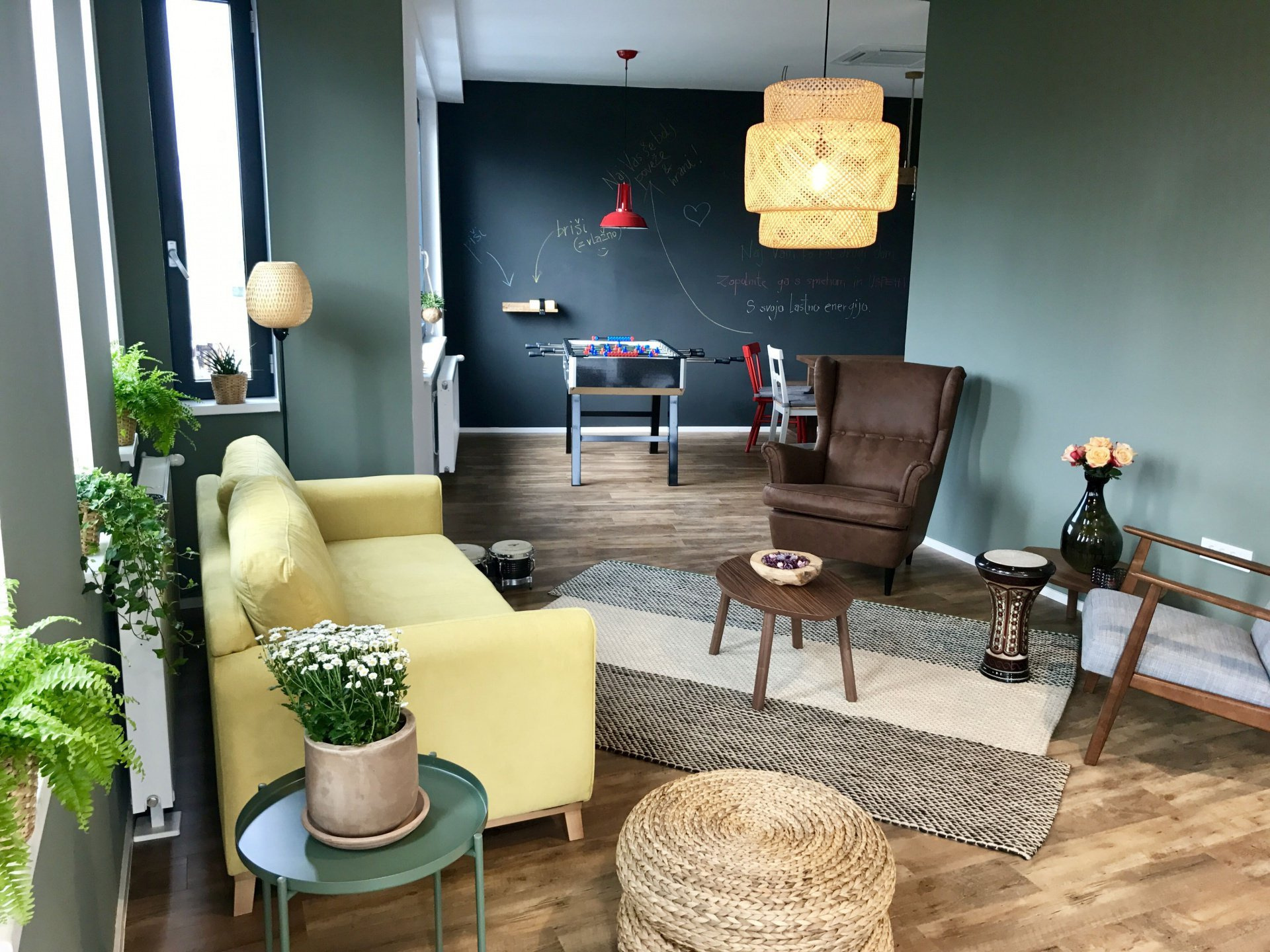 
| Clean room facility for wet and photo chemistry
This is a view of a part of the 200 m2 clean room of the Condensed Matter Department of JSI. The facility was constructed in 1989 as a centre for the development of Liquid Crystal Display technology and is in operation ever since then. This part of the clean room is for wet chemistry and photochemistry and is located next door to the Nanoscribe printer. On your left is a Santa Barbara wet bench developing photoresist and etching thin layers of metals, used for transparent electrodes and similar. Next to it is an UV ozone cleaning machine with RF excitation to produce oxygen plasma. This is for fine cleaning of surfaces. Next to it are several spinners for spinning-on photoresists and different liquid crystal alignment layers, such as the polyimide. On your right side are various working places for assembling LCDs, spray deposition of spacers and filling displays with a liquid crystal. The door in the centre is an entrance to a specially designed room with a very good temperature stabilisation of the whole room.
|
 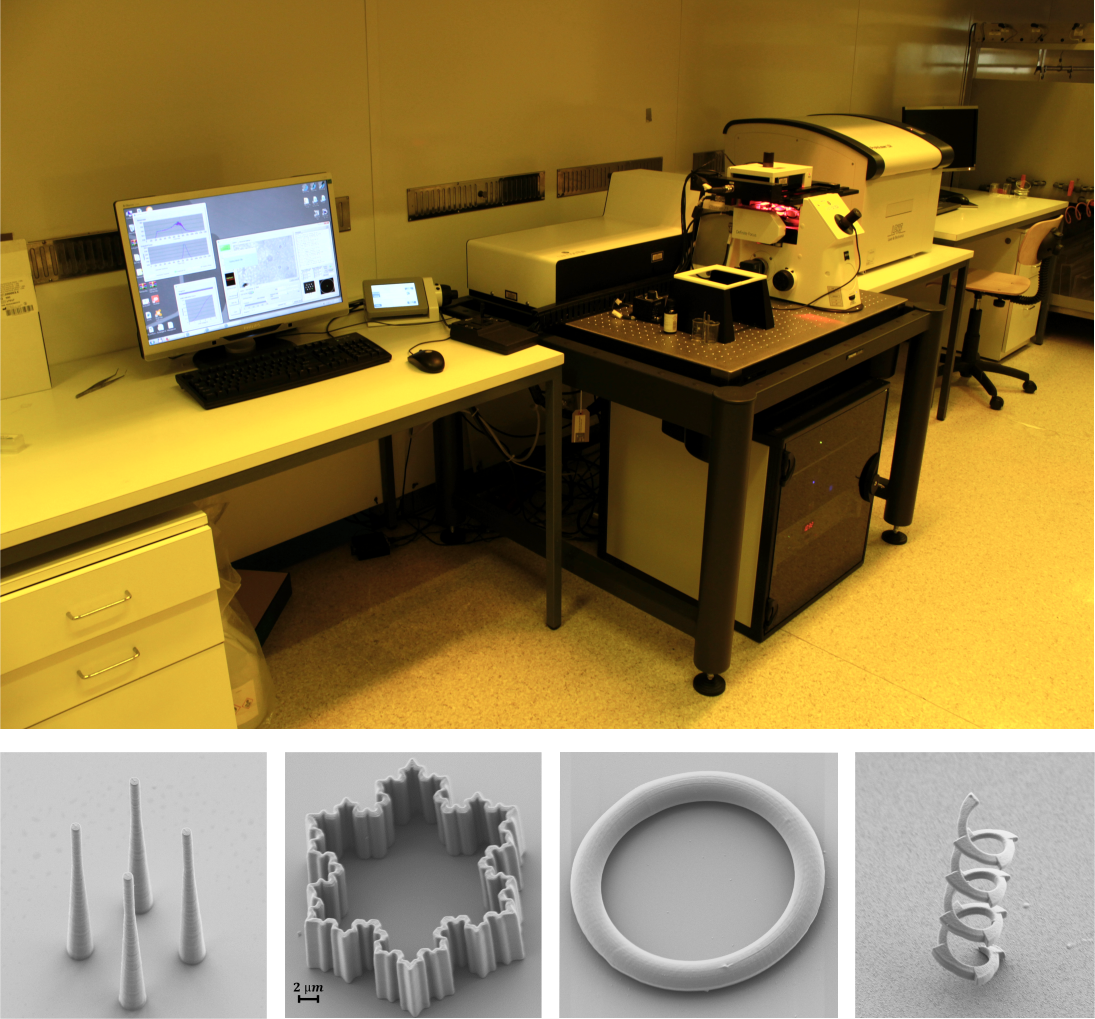
| Two-photon polymerization 3D printer Nanoscribe Photonic Professional
This two-photon machine is used for printing of polymer structures with voxel size of 120 nm by 500 nm with high speed of 100 μm/s. The machine is operating in a clean room of the Department of Condensed Matter at JSI. The machine can be operated by any student who passes an introductory course on machine operation supervised by the staff. The wet chemistry for particle development and structure fixation is next door.
|
 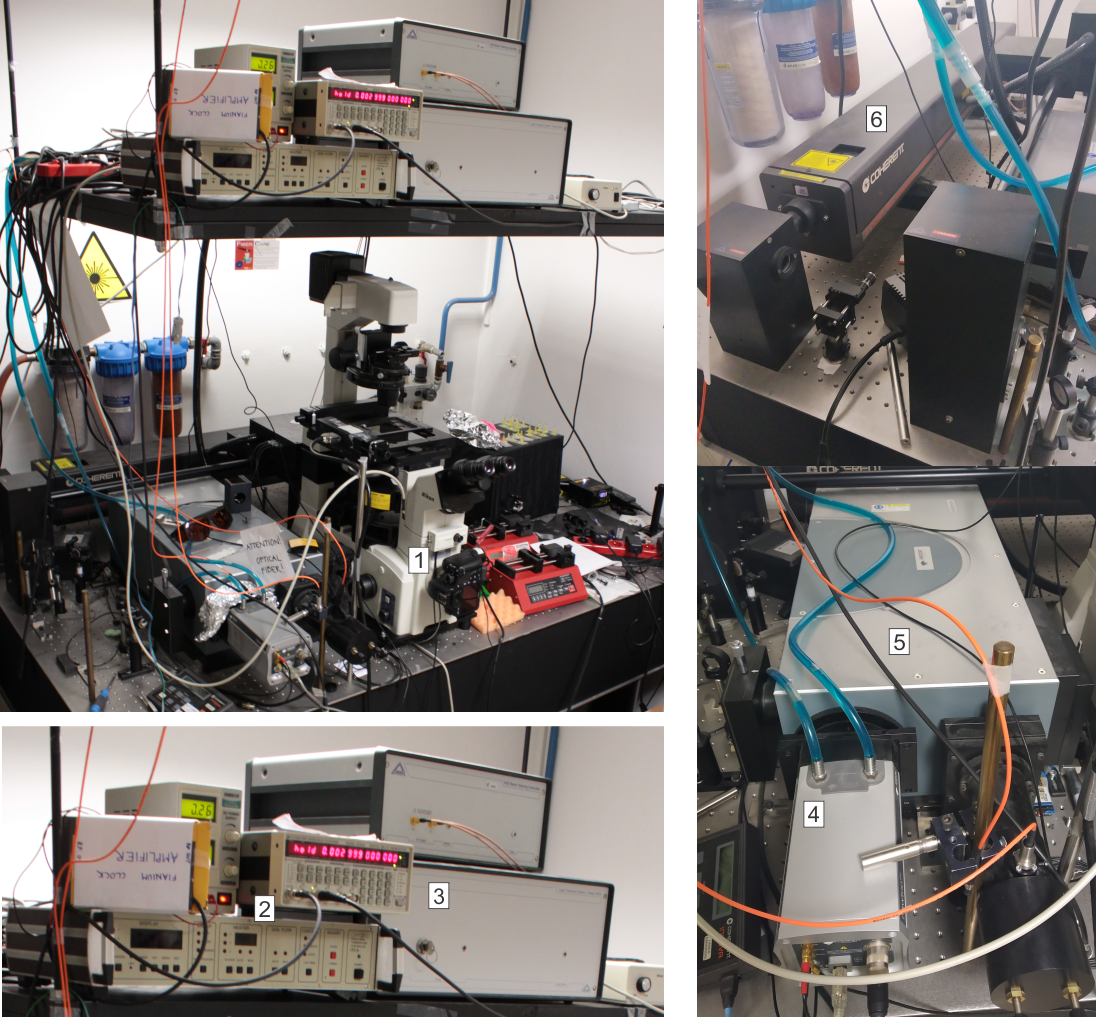
| Two colour laser tweezers with spectrometer and pulsed Q-switched DPPS laser
This is the first of the four central working places in the main laboratory. The set-up is built on an optical table and consists of two different laser tweezers, which are built around the Nikon TE2000 inverted polarizing microscope Prior with motorized stage [1]. The first tweezers is an Aresis infrared laser tweezers operating with fibre laser at 1064 nm and 5W [3]. The second Aresis tweezers is based on Ar+ laser (Coherent) operating at 514.5 nm and 1.8 W of optical power [6]. Both tweezers are fully independent in operation, they are both based on AOD technology and provide a multiple of optical traps that could be designed in arbitrary pattern in the focal plane of the microscope. This set-up has an additional temperature control unit, which is home-made planar ITO heater and provides precise (0.1 K) temperature control of the sample under the microscope objective. For taking the optical spectra from objects in the focus (such as small droplet of a liquid crystal), a Czerny-Turner imaging spectrometer (Andor Shamrock SR-500i)[5]. The light is captured by an Andor Newton DU970N camera [4]. In addition to this Newton camera, an electron multiplying CCD Andor camera is available and several othe CCD cameras (Pixelink, Canon). A pulsed Q-switched DPPS laser is available for optical pumping in the experiments on liquid crystal microlasers.
|
 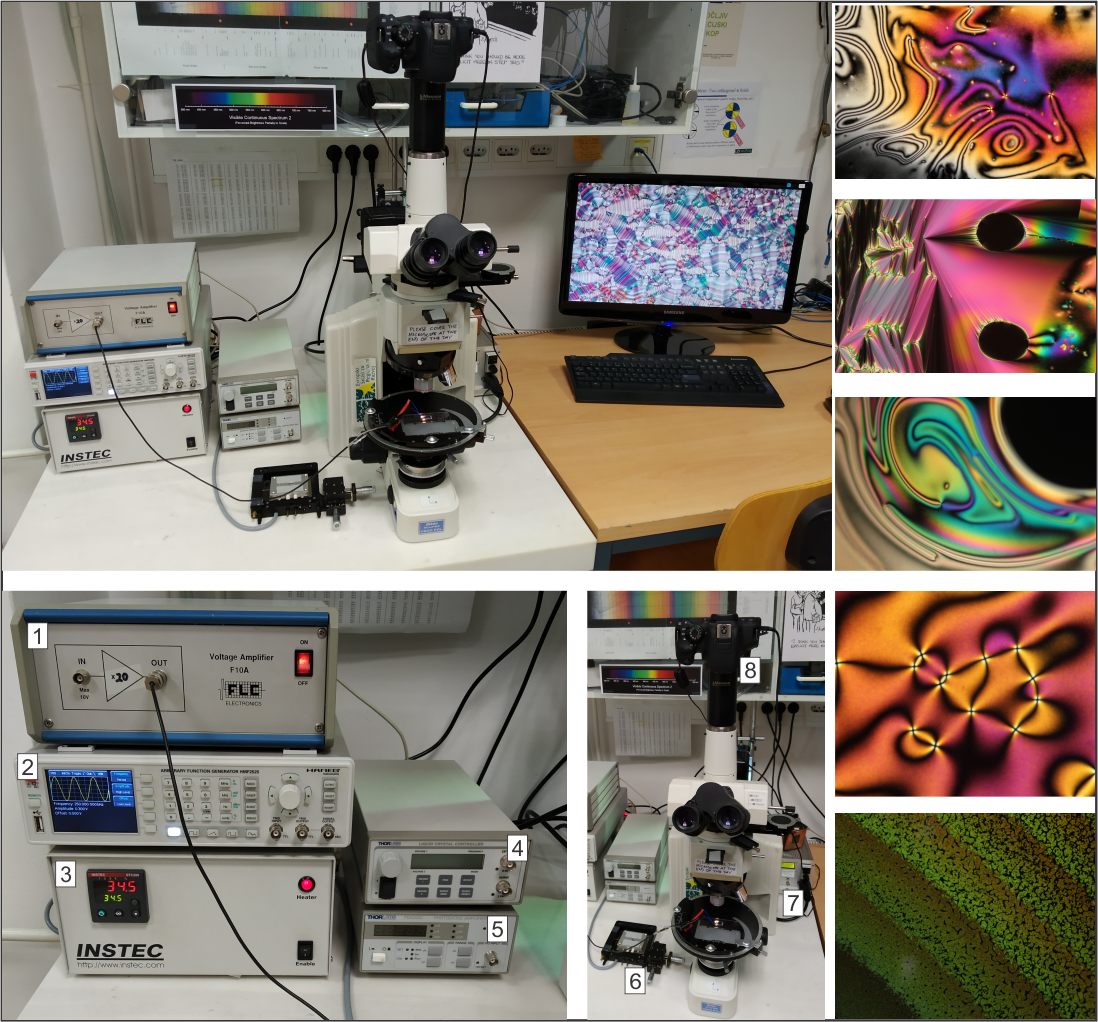
| Polarizing optical microscope Nikon Eclipse E600
This is the second working place in the main laboratory. It is built around an upright microscope and is intended for everyday use in the main laboratory. The microscope provides standard polarization techniques and is equipped with an Instec stage [6] with temperature control [3]. Several illumination systems are available including broadband white illumination and narrow band LED sources of different colour. An arbitrary function generator [2], voltage amplifier [1] and photodiode amplifier [4] are available for electro-optic measurements.
|
 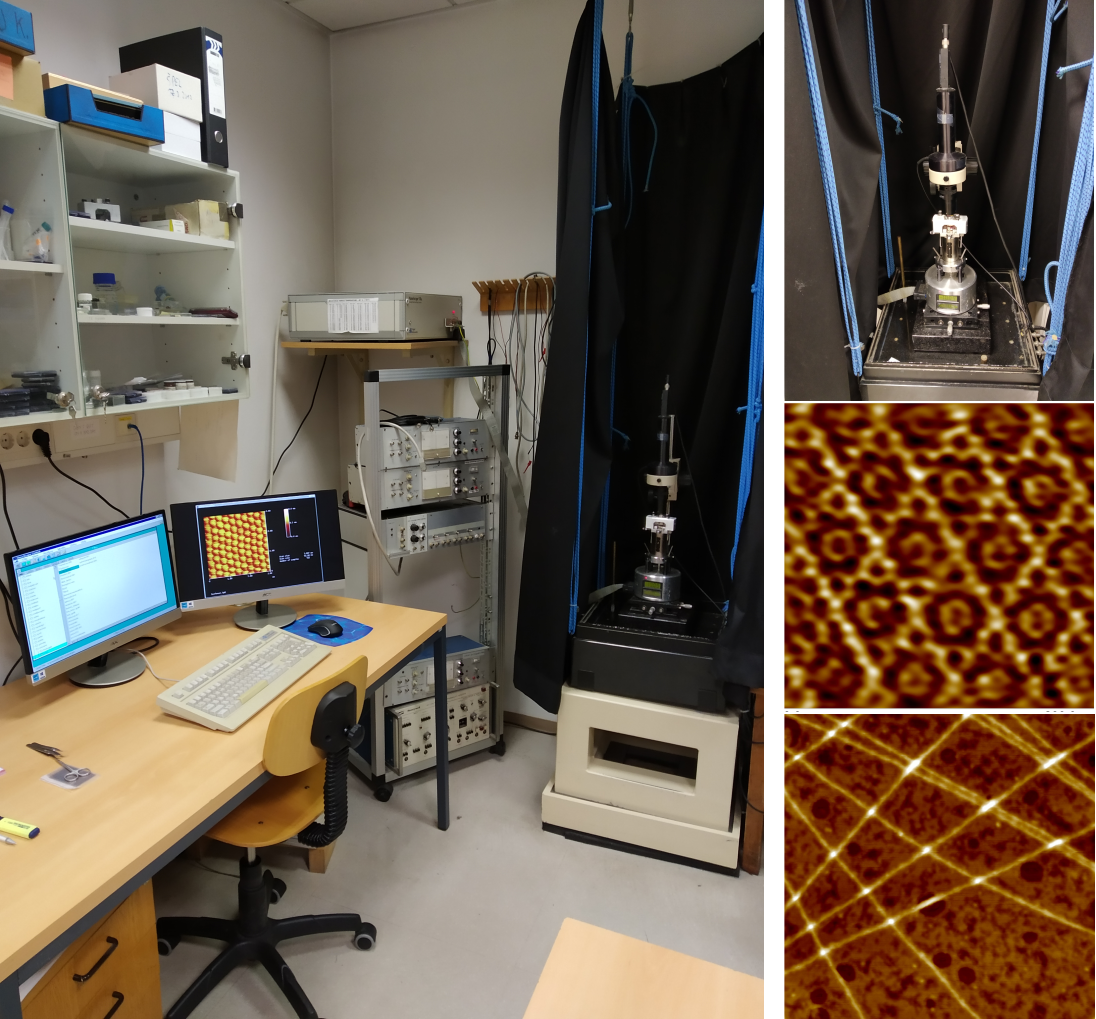
| Atomic force Microscope Nanoscope IIIa, Digital Instruments
This is the third working place in the main laboratory, and the oldest-one. This microscope was installed in 1995 and has been operating ever since 24 hours a day, shutting down only during holidays and vacations. This AFM is one of the first versions of Nanoscope IIIa legendary instruments that have proven its simplicity of operation, friendly software, extreme reliability and extreme resolution. It is placed on a 100 kilogram piece of marble that is suspended by bungee cords from the ceiling. This provides extremely good vibration isolation and allows for nanometer resolution in air and ambient conditions. This instrument is operated by students who get their licence for operation from the staff.
|
 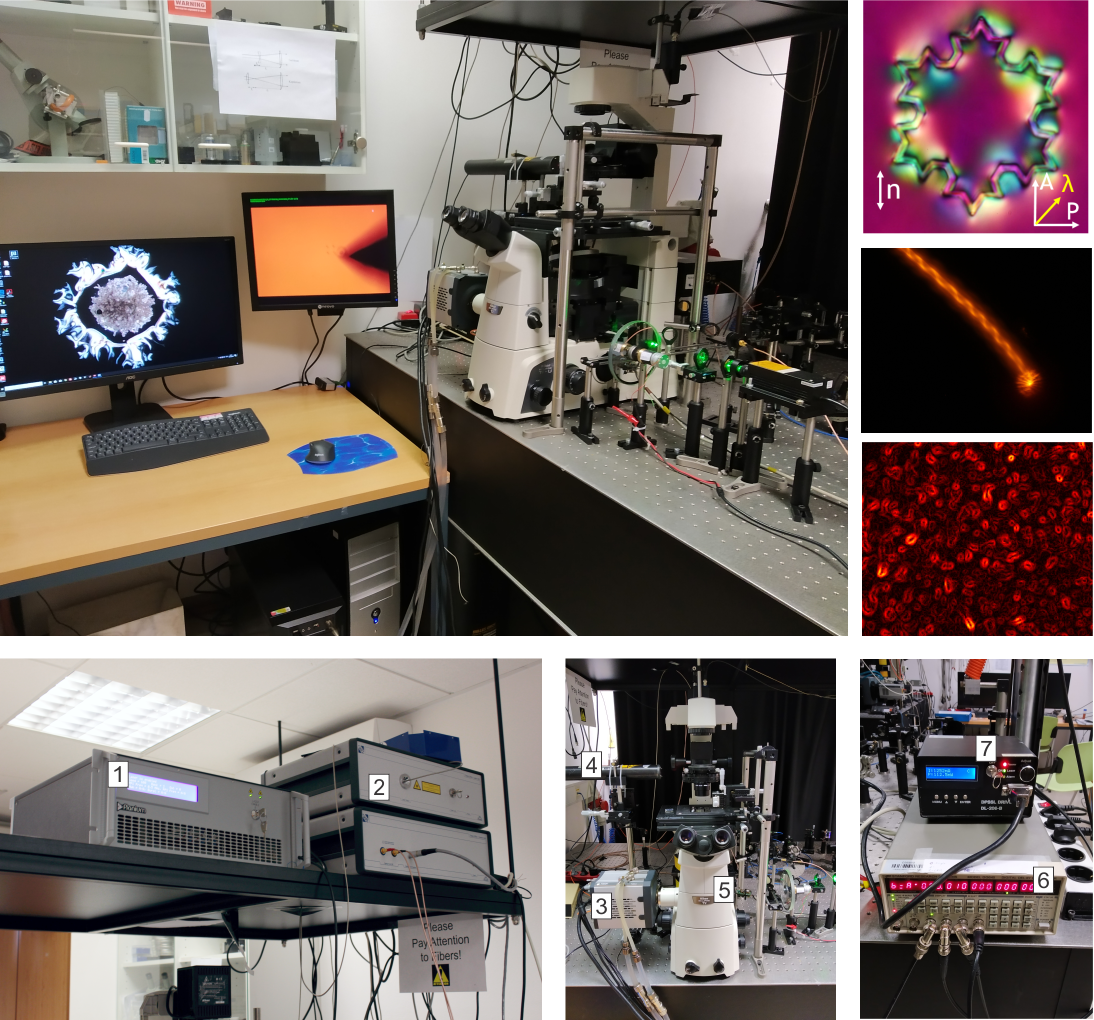
| Inverted Polarizing optical microscope Nikon TE2000 with IR laser tweezers and STED setup
This is the fourth working place in the main laboratory room that is intended for custom designed experiments. Previously, it was hosting a set-up for the development of STED technique and currently it is being built for Kibble-Zurek experiments. The whole set-up is built on an optical table and around a high quality inverted polarizing microscope (Nikon TE2000) with motorized stage (Prior) and custom designed pulsed LED illumination system. Using narrow band optical illumination and index matching we can obtain an image resolution around 140 nm, which is right at Abbe’s theoretical resolution limit of an optical microscope. The microscope is coupled to an Aresis laser tweezers (the third in this lab), operating in AOD multiple trap technology and using a fibre laser at 1064 nm and 5W of optical power. Several lasers are available around this set-up, including 100 picosecond white light laser (Fianium, 2W) for STED experiments, He-Ne CW laser 5 mW and 532nm 200mW CW laser. A general purpose digital pulse delay generator (Stanford Research Systems) is available for synchronous triggering of multiple devices with picosecond accuracy and a very sensitive CMOS camera (Andor Neo) for imaging.
|
 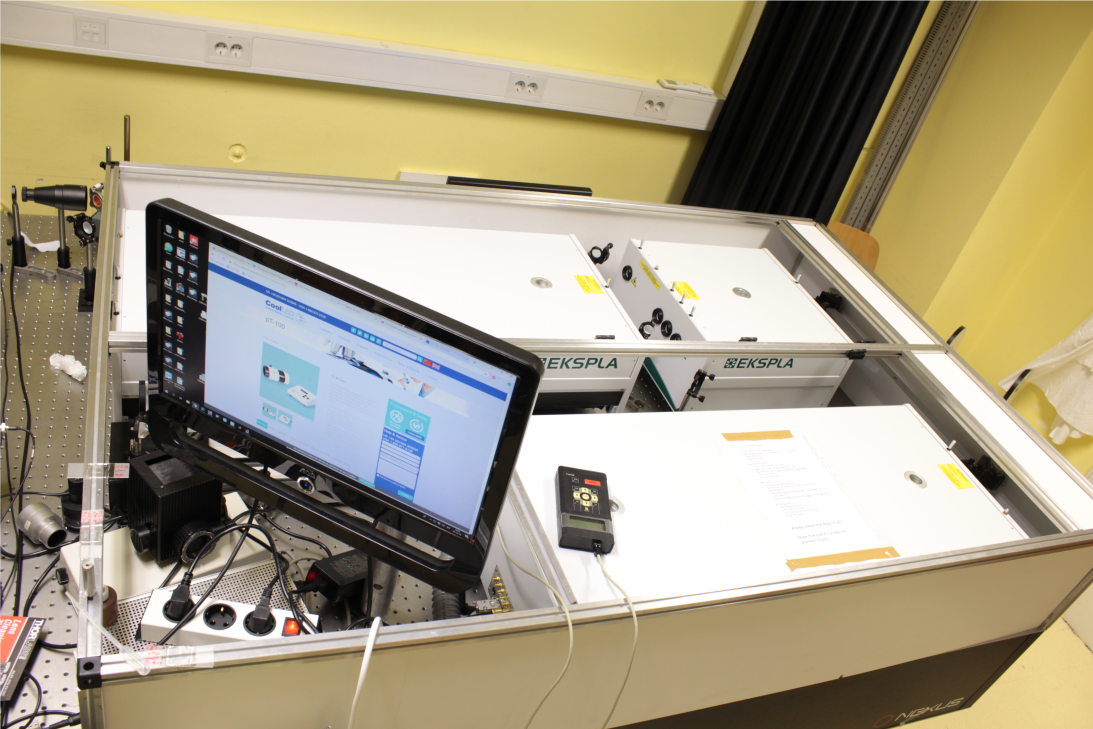
| 40 mJ picosecond laser Ekspla with tuneable OPA and Nikon Eclipse microscope with LED illumination
This is a picture of a 50 mJ 30 picosecond Ekspla laser (PL2251A-10) operating at 10 Hz. The laser’s basic operation wavelength is 1064 nm and it has installed next to it a unit with 3 ports generating higher harmonics: 532 nm, 355 nm and 266 nm. Next to it is an OPA amplifier that provides tuneable laser pulse in the range 400-700 nm. |
 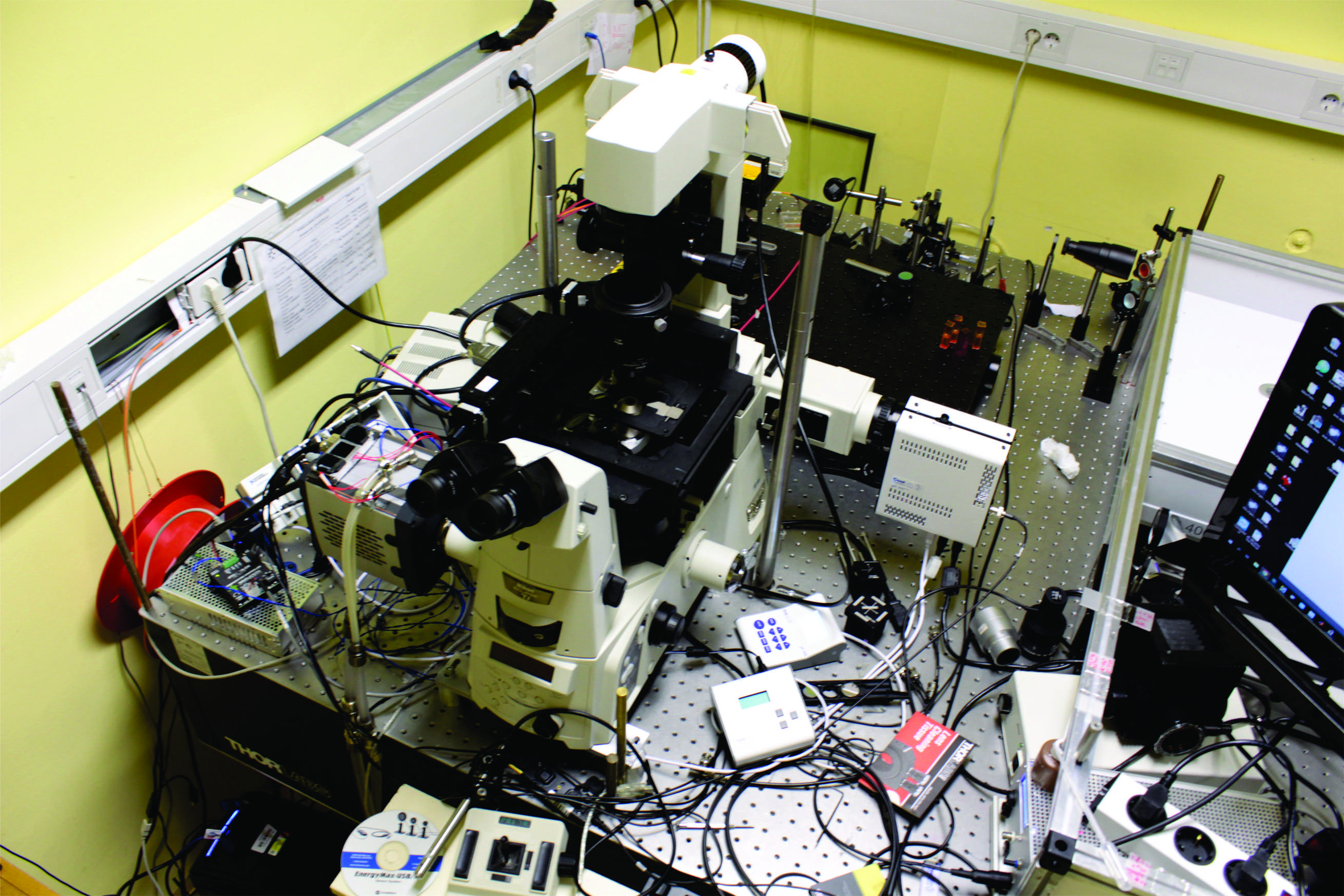
| This is a working place for dedicated experiments using picosecond high energy and tuneable output laser. It is built around Nikon Eclipse Ti2 Inverted microscope with narrow band LED illumination for reflection (COOL LED). It has a custom build temperature controlled sample holder with motorized stage (Prior) and is currently hosting a Blue Phase experiment with CDDM: cross-differential dynamic microscopy. |
